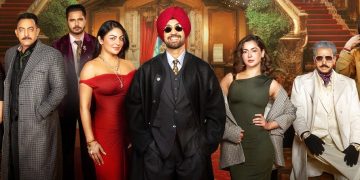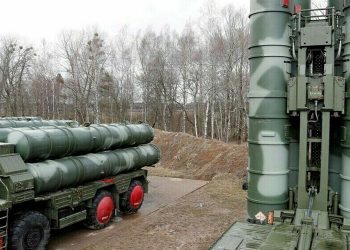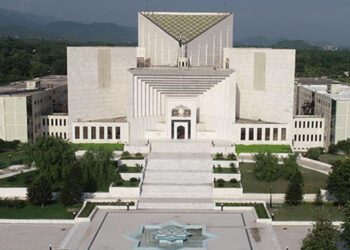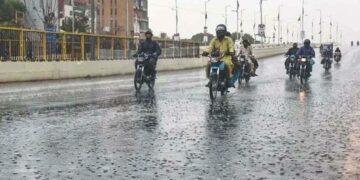Through a single film, the Islooites were transported to another place, another time, and another way of seeing the world. That’s the quiet power of cinema diplomacy — connecting hearts and minds across borders, one story at a time.
It’s not every day that a high-octane, experimental German film from the 1990s stirs up reflection and curiosity among Pakistani audiences. But that’s exactly what happened when Run Lola Run (Lola Rennt), the cult classic directed by Tom Tykwer, was screened in Islamabad, courtesy of the German Embassy in collaboration with the Goethe-Institute and Marriott Hotel. The event was more than just an evening at the movies — it was a bold reminder of the power of cinema as a tool for diplomacy, empathy, and cultural exchange.
In a world where global conversations are increasingly filtered through the language of power, trade, and conflict, art — especially cinema — offers an alternative narrative. One that is humane, emotional, and unbound by borders. The screening of Run Lola Run wasn’t just about showcasing German creativity; it was about making a cultural connection with a diverse Pakistani audience eager for stories that transcend language and geography.
The Chargé d’Affaires of the German Embassy, Arno Kirchhof, rightly described the film as a landmark of post-reunification German cinema. But even more significantly, Run Lola Run is a cinematic exploration of the butterfly effect: how a second’s delay, a turn of the head, a moment of indecision can change everything. In a country like Pakistan, where life itself often feels like a race against time, where youth face the consequences of decisions made under pressure, this film struck an unexpected chord.
The narrative structure — three variations of the same scenario — pushes us to reflect: how often do we consider the ripple effect of the choices we make? How frequently do we pause and acknowledge that our present is shaped by minute interactions, chance meetings, and fleeting moments? Watching Lola run not just once, but three times, was to see fate dance with agency. And that, perhaps, is the most universal message of all.
But beyond the cinematic value, this screening also showed how films can be instrumental in building deeper, more enduring people-to-people ties between countries like Germany and Pakistan. Cinema diplomacy—when countries use film and storytelling as tools of outreach — is one of the most effective and organic forms of cultural exchange. It bypasses the limitations of language and policy, speaking directly to emotion and human experience. A film like Run Lola Run introduces Pakistani viewers to German societal nuances, artistic expressions, and historical contexts, fostering curiosity and appreciation. In turn, such events open the door for German audiences to engage with Pakistan’s evolving cultural identity.
By watching each other’s stories unfold on screen, audiences in both countries begin to see each other not as distant strangers bound by geopolitics, but as fellow travelers in the human condition — grappling with similar hopes, dilemmas, and aspirations. This is the essence of people-to-people understanding: building empathy not through negotiation tables, but through shared cinematic experiences.
More important, though, is what this screening symbolized in a larger context. Pakistan and Germany share diplomatic relations that are decades deep, but events like this film screening breathe life into that relationship. Culture, unlike politics, speaks directly to the heart. It sidesteps bureaucracy and reminds us of our shared humanity. That a film produced in a united Berlin can resonate in a crowded hall in Islamabad in 2025 is proof of just how porous and powerful culture can be.
There’s also a lesson here for Pakistan’s own diplomatic and cultural machinery. Too often, we relegate cultural exchange to a secondary status, treating it as decoration rather than substance. Germany understands this differently. Through the Goethe-Institute and similar platforms, they’ve consistently invested in soft power—not as a substitute for foreign policy, but as its emotional foundation. It’s time we in Pakistan did the same. We have our own stories to tell, our own Lolas, and our own Manni dilemmas. But are we investing enough in platforms that allow us to share them with the world?
Another powerful takeaway from the event was the makeup of the audience. It wasn’t just a room full of diplomats and elites. Civil society members, artists, students, journalists, and curious citizens filled the room — people who may never have watched a German-language film otherwise. This inclusiveness made the evening not just a cultural event but a democratic one. Art must be accessible if it is to be transformative.
The German Embassy deserves applause for recognizing this. So does the Goethe-Institute, which has worked for years to build cultural bridges through language, film, music, and literature. In their collaboration with Marriott, they turned what could have been a closed-door screening into a shared experience. That’s not just good planning — it’s effective, heartfelt diplomacy.
We live in a time of rapid change and shrinking attention spans. But Run Lola Run, with its relentless momentum and emotional depth, reminded us of the enduring value of storytelling. It made us think, feel, and question — all within 80 minutes. And in that sense, it did what no press release or bilateral communiqué ever could.
In the final analysis, events like these are not peripheral — they are essential. They represent the humane face of diplomacy, the quiet triumph of art over apathy. They bring people together, not through political slogans or trade agreements, but through shared laughter, suspense, and introspection. And they remind us that sometimes, the fastest way to connect nations is not through embassies — but through cinema. That’s a lesson worth learning — on screen and off.


























